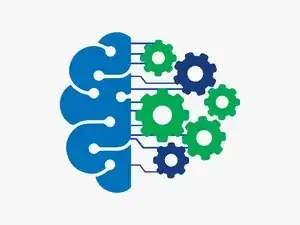Background Information
Machine Learning Models are a class of artificial intelligence (AI) algorithms that are trained on data to perform specific tasks, such as natural language processing, image recognition, and recommendation systems. These models have revolutionized various industries by enabling computers to learn from data and make intelligent predictions or decisions.
How Machine Learning Models can Benefit Repair and Troubleshooting
While Machine Learning can have various applications and uses, their usage can also be beneficial in the field of repair.
- Fault Detection and Diagnostics: By leveraging large datasets of known electronic faults and symptoms, these models can analyze patterns and identify potential faults in electronic devices. This enables technicians to efficiently diagnose issues and determine the most appropriate repair strategies.
- Predictive Maintenance: Machine Learning Models can learn from historical data to predict potential failures or malfunctions in electronic devices. This allows for proactive maintenance, helping technicians perform timely repairs or replacements before a device completely breaks down, minimizing downtime and improving overall reliability.
- Automated Repair Recommendations: By analyzing troubleshooting data, Machine Learning Models can provide automated recommendations for repairing electronic devices. These models take into account observed symptoms and suggest possible solutions, offering valuable guidance to technicians or users performing repairs.
- Knowledge Base and Documentation: Machine Learning Models can assist in creating and maintaining comprehensive knowledge bases and documentation for electronic devices. By analyzing repair manuals, troubleshooting guides, and user interactions, these models generate accurate and relevant information to assist users in diagnosing and fixing common issues.
- Virtual Assistance and Chatbots: AI-powered virtual assistants and chatbots, utilizing Machine Learning Models, can provide real-time troubleshooting guidance to users. These models understand user queries and respond with appropriate solutions or direct users to relevant repair resources, enhancing customer support experiences.
- Component Identification: Machine Learning Models trained on image recognition can assist in identifying electronic components and their specifications. This capability proves valuable when technicians need to replace specific components but are unsure of their exact models or specifications.
Common Use Cases
Machine Learning Models find applications in a wide range of domains, including:
- Natural Language Processing (NLP): Models like ChatGPT excel in generating human-like text responses, enabling chatbots, virtual assistants, and language-based applications.
- Computer Vision: Models such as Convolutional Neural Networks (CNNs) are used for image classification, object detection, and facial recognition.
- Recommendation Systems: Models like collaborative filtering algorithms are employed to provide personalized recommendations for products, movies, or music based on user preferences.
- Anomaly Detection: Models are trained to identify unusual patterns or outliers in data, aiding in fraud detection, network security, or equipment maintenance.
- Predictive Analytics: Models analyze historical data to make predictions or forecasts, helping with sales forecasting, stock market predictions, or healthcare outcomes.
Different architectures are used for various machine learning tasks, including:
- Transformers: Transformer-based models, such as the GPT (Generative Pre-trained Transformer) architecture, have gained popularity in language generation and understanding tasks.
- Convolutional Neural Networks (CNNs): CNNs are widely used for image and video processing tasks due to their ability to capture local patterns and spatial hierarchies.
- Recurrent Neural Networks (RNNs): RNNs are effective in sequential data processing tasks, including text generation, speech recognition, and time series analysis.
- Generative Adversarial Networks (GANs): GANs consist of a generator and a discriminator network and are used for tasks like generating synthetic images, enhancing data, and generating realistic deepfakes.
Training and Dataset Preparation
To create machine learning models, the following steps are typically involved:
- Data Collection: Gathering relevant data from various sources or creating synthetic datasets.
- Data Preprocessing: Cleaning, normalizing, and transforming the data to ensure compatibility with the model.
- Model Training: Optimizing model parameters using training data through techniques like backpropagation and gradient descent.
- Validation and Evaluation: Assessing model performance on validation sets and evaluating metrics such as accuracy, precision, recall, or F1 score.
- Model Deployment: Integrating trained models into production systems or deploying them as APIs for real-time predictions.
Considerations and Limitations
When working with machine learning models, it's important to consider the following:
- Ethical Concerns: Ensuring fairness, transparency, and avoiding bias in training data and model outputs.
- Data Availability and Quality: Acquiring high-quality and representative data for training and validation.
- Interpretability and Explainability: Understanding the decision-making process of complex models for accountability and trust.
- Generalization and Overfitting: Balancing model complexity to avoid overfitting or underfitting on new, unseen data.

